×


We have detected your country as:
Please click here to go to the USA website or select another country from the dropdown list.
by: Janet Aslin, Assistant Editor
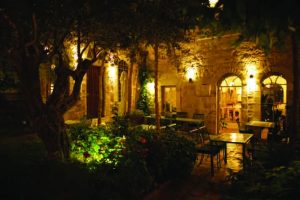
Photo: Xavier Gillet/ Wikipedia.org
We often want to know what has happened in a particular place. Jerusalem is an ancient city and its walls could tell a myriad of stories. Let’s visit three specific locations that have seen their share of modern-day Jerusalem’s history.
What connection does the famous hymn “It Is Well with My Soul” have to Jerusalem? The legacy of its author, Horatio Spafford, lives on at the American Colony Hotel. In 1881, after several personal tragedies, Spafford and his wife came to Jerusalem with a small group to form a Christian utopian society which became known as the “American Colony.”
In 1895, the group bought the building that was eventually to become the American Colony Hotel. Originally built by an Ottoman pasha who lived there with his four wives, the structure took on a whole new purpose. The Spafford group, and some like-minded Swedish Christians, lived communally and helped those around them, both Jews and Arabs.
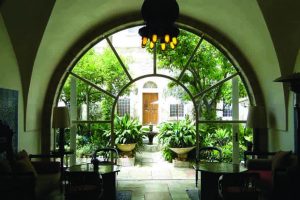
Photo: Adam Jones/ Wikipedia.org
Today’s modern hotel traces its roots to 1902, when the community began taking in paying guests. The community retained its religious roots until 1930 when divisions within the membership caused a shift in focus. Ownership of the building has remained with the Spafford family to this day.
During the British Mandate period, such distinguished guests as General Allenby and T.E. Lawrence (of Arabia) ensured that the walls overheard many a political discussion. In 1947, the Colony’s location between the Jordanian army and Jewish underground units from western Jerusalem led to its being shelled 21 times. The hotel was located in Jordanian-controlled territory until the reunification of Jerusalem in 1967.
Today a favorite haunt of diplomats and journalists, the American Colony is a classic example of 19th century Ottoman architecture with period furniture in many of its rooms.
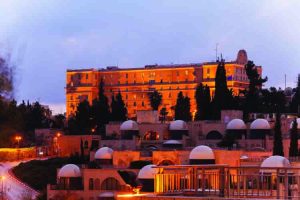
Photo: Rostislav Ageev/ Shutterstock
Not yet 100 years old, the regal King David is perhaps the best-known of Jerusalem’s hotels. Built by the Jews of Cairo, primarily Ezra Mosseri, and constructed of locally quarried pink limestone, the hotel was opened for business in 1931. The prestigious hotel boasts stunning views and throughout its existence has been “the place” to stay when dignitaries come to town.
The King David has also been a home to royalty. King Alfonso XIII resided at the hotel after he was forced to flee Spain in 1931. Emperor Haile Selassie (Ethiopia) and King George II (Greece) also stayed at the King David after circumstances forced their departures from their countries. Since statehood, many world leaders and celebrities have stayed at the hotel. Famous guests are memorialized as their signatures adorn a long strip of white stone inlaid in the floor of the hotel’s lobby.
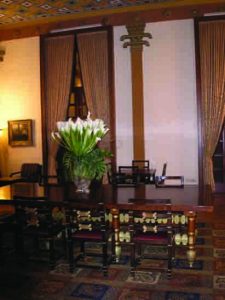
Photo: Deror Avi/ Wikipedia
The King David has also played other roles. Because of its central location, in 1938 the British Mandate government requisitioned the entire southern wing leaving less than a third of the rooms for civilian use. On July 22, 1946, the Irgun (militant underground Zionist organization) carried out an attack on the British headquarters at the hotel. Their aim was not to cause any deaths, but rather to destroy incriminating evidence the British had taken from the Jewish Agency. Warnings were sent by telephone, even one to the hotel’s switchboard, but sadly the alerts were ignored and as a result, 91 people died and 46 were injured. The damage was repaired and part of the hotel continued to be used by the British until May 4, 1948.
The hotel may appear plain from the outside, but as you step into the lobby, you will feel as though you are entering a Middle Eastern palace. The King David is known for luxury and impeccable service as well as the historic events that have taken place within its walls. Even though you may not be staying there, it is worth your time to visit this majestic hotel.

Photo: Khirman Vladimir/ Shutterstock
Overlooking the Hinnom Valley, the Mount Zion Hotel offers its guests splendid views of the Old City as well as a peek at a daring exploit of Israel’s War of Independence. These walls didn’t begin life as a hotel, but as an eye hospital that was established in the 1880s. During WWI, the Ottoman army used the building as a weapons storehouse. It was damaged by heavy bombardment during the war and sat vacant until the British decided to renovate it in the 1930s.
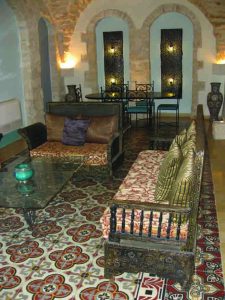
Photo: Deror Avi/ Wikipedia
Once again, it served as a hospital until 1948 when its strategic location caused the building to become a star player in a drama that took place under the cover of darkness. On May 18, 1948, Israeli forces managed to take Mount Zion, holding this tiny foothold in the Old City until the armistice was declared. The problem of getting supplies to the soldiers and evacuating the wounded was initially solved by a narrow tunnel across the valley. In December, 1948, a 656 ft (200 m) steel cable was stretched from the hospital to the IDF post at an abandoned school on Mount Zion. The cable car could carry approximately 250 kg (550 lb) during a trip that lasted about two minutes. The cable was dropped to the valley floor each night thus keeping it a secret from the enemy.
The cable car was used for just six months during the war, but the IDF kept it fully operational until 1967. During this time the existence of the cable car was considered a military secret and only revealed to the public in 1972.
In the 1980s, the former eye hospital became a boutique hotel. Anyone can take an independent, free tour of this historic hotel and onsite cable car museum.
All three hotels have seen their share of the history that has shaped the modern city of Jerusalem. If their walls could speak, just imagine what stories they would tell.
All logos and trademarks in this site are property of their respective owner. All other materials are property of Bridges for Peace. Copyright © 2024.
Website Site Design by J-Town Internet Services Ltd. - Based in Jerusalem and Serving the World.